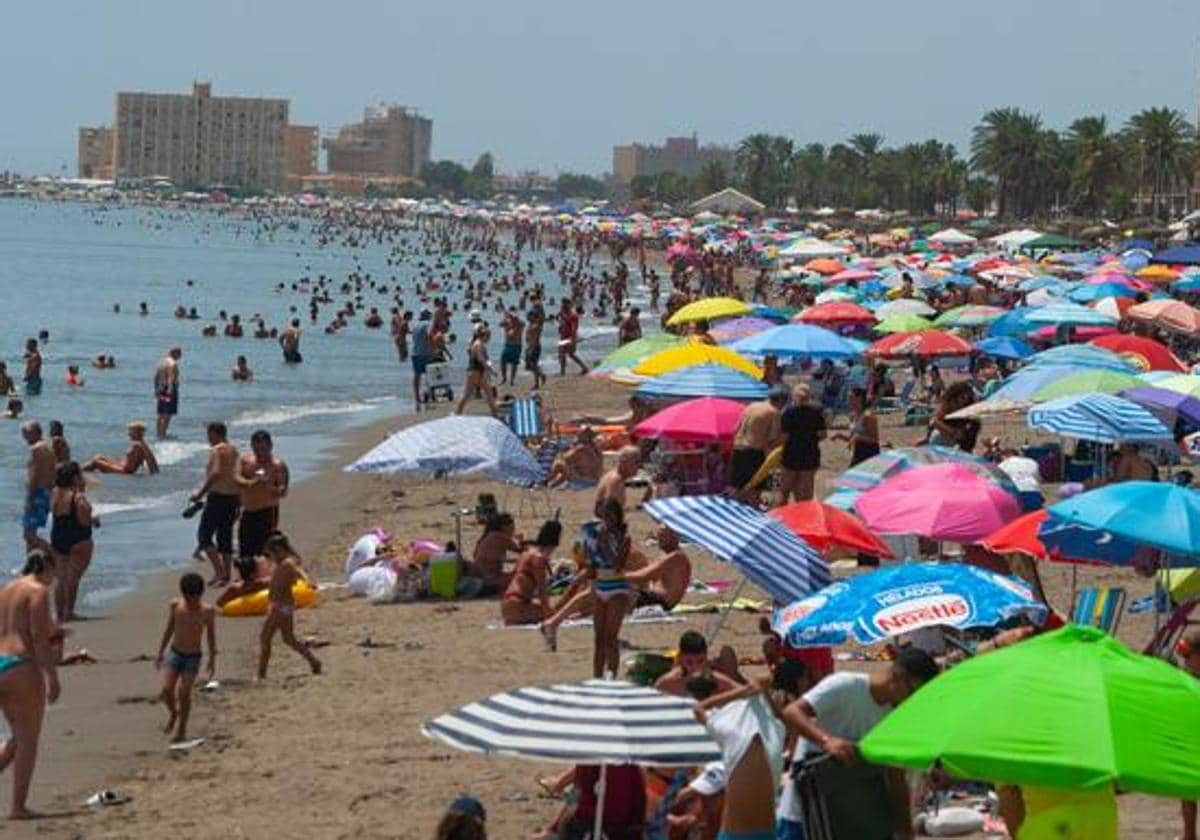What will the weather be like this spring in Spain?
WEATHER ·
State weather agency Aemet has issued its prediction for the April - June season, and even dared to look ahead to summerEuropa Press
Lunes, 20 de marzo 2023, 09:55
Spring, which starts today (20 March), is forecast to be somewhat warmer in Spain as a whole, rainy on the Atlantic coast but drier than normal on the Mediterranean coast and Balearic Islands, according to state weather agency, Aemet.
During the organisation’s seasonal press conference, spokesperson Rubén del Campo said that the April-June quarter will have normal or slightly warmer temperatures on the mainland, especially in the east and in both the country’s island groups.
Regarding rain, it is most likely that it will fall as normal this spring, although the signs indicate that there could be more rain than normal in the west and centre of the mainland and but be drier than normal on the Mediterranean coast and the Balearic Islands.
The spring season comes after a winter that has generally been humid and mild on the mainland and in the Balearic Islands and normal in the Canary Islands, with a thermal anomaly compared to the average for the whole of Spain of 0.8C and an average temperature of 7.4ºC on the mainland.
Winter 2022-2023, ranks as the tenth warmest since records began and as the fifth warmest in the 21st century, while regarding rainfall there have been 30 drier and 31 wetter winters than this for as long as there have been records.
For months, del Campo has said that December was "extremely warm", the mildest in history, it was so much so that, although January and February were normal afterwards, it gave a warm value to winter as a whole. January was normal, with a negative anomaly of -0.1C and February was slightly below the average, mainly as a result of the nighttime values, but overall it also had a normal character, with an anomaly of -0.4C.
Del Campo also highlighted that the four previous winters were either mild or very mild so that this is "the first time" that five years of mild or very mild winters have been recorded.
By geographical area, winter was very mild in the southern third of the country, mild in the centre and northwest, and normal in the Cantabrian Sea, the Ebro Valley, and the Valencian region. In the islands, it was mild in the Balearic Islands and mild or normal in the Canary Islands, although it was cold in the higher altitude areas.
Regarding rainfall, the winter was generally dry as a whole, which has not helped to alleviate the meteorological and long-term drought that is forming. In Spain as a whole it rained an average of 194.5mm which represents 103 per cent of the normal value for the quarter for the reference period 1991-2020.
However, this contribution of 3 per cent above normal values is mostly due to the month of December, which was very wet compared to a normal January and a very dry February in the country as a whole.
Long-term drought
Aemet’s spokesperson stressed that Spain as a whole is still in a meteorological drought situation and, twelve months on, the Standard Precipitation Index (SPI) shows that the drought that began in January 2022 and affects all the areas except Tagus, Júcar and Segura which are "slightly out of the situation".
Del Campo added that the rains of the last three years are scarce enough to speak of a long-term drought that began in December 2022. This means that if beyond the last 12 months the previous 36 are studied, it can be said that Spain entered a long-term drought at the end of 2022 and despite the December rains at this point in March the situation remains and that the most affected areas are the Guadalquivir, South and Eastern Pyrenees. In fact, he stressed that the northeast of the peninsula is one of the areas hardest hit by the current meteorological drought and the most affected is Catalonia, which is experiencing an intense drought from which "it has not recovered in recent months" and even the Ebro "has got worse and the drought has become more intense."
However, the spokesperson confirmed that it is not yet the most intense drought of the 21st century, since so far this century there have been more intense and longer droughts, such as the one from 2005 to 2007, in 2017, 2018 or the worst of the 1980s and 90s.
Regarding the month of March, Del Campo said that its first fortnight has been hot and dry, with temperatures above normal and with barely 36 per cent of the normal rainfall for the month. "The rain has not come," said the spokesperson who stressed that in much of the north and east it has barely rained.
Beyond spring, which could be normal in terms of rain and more rain than usual on the Atlantic coast, Aemet predicts a summer with temperatures above the normal average and warns that if water scarcity continues, with these values high temperatures, the fire risk index could be “very high”. Del Campo said, "Hopefully spring will come with a little more rain and the situation will not be so severe,"
